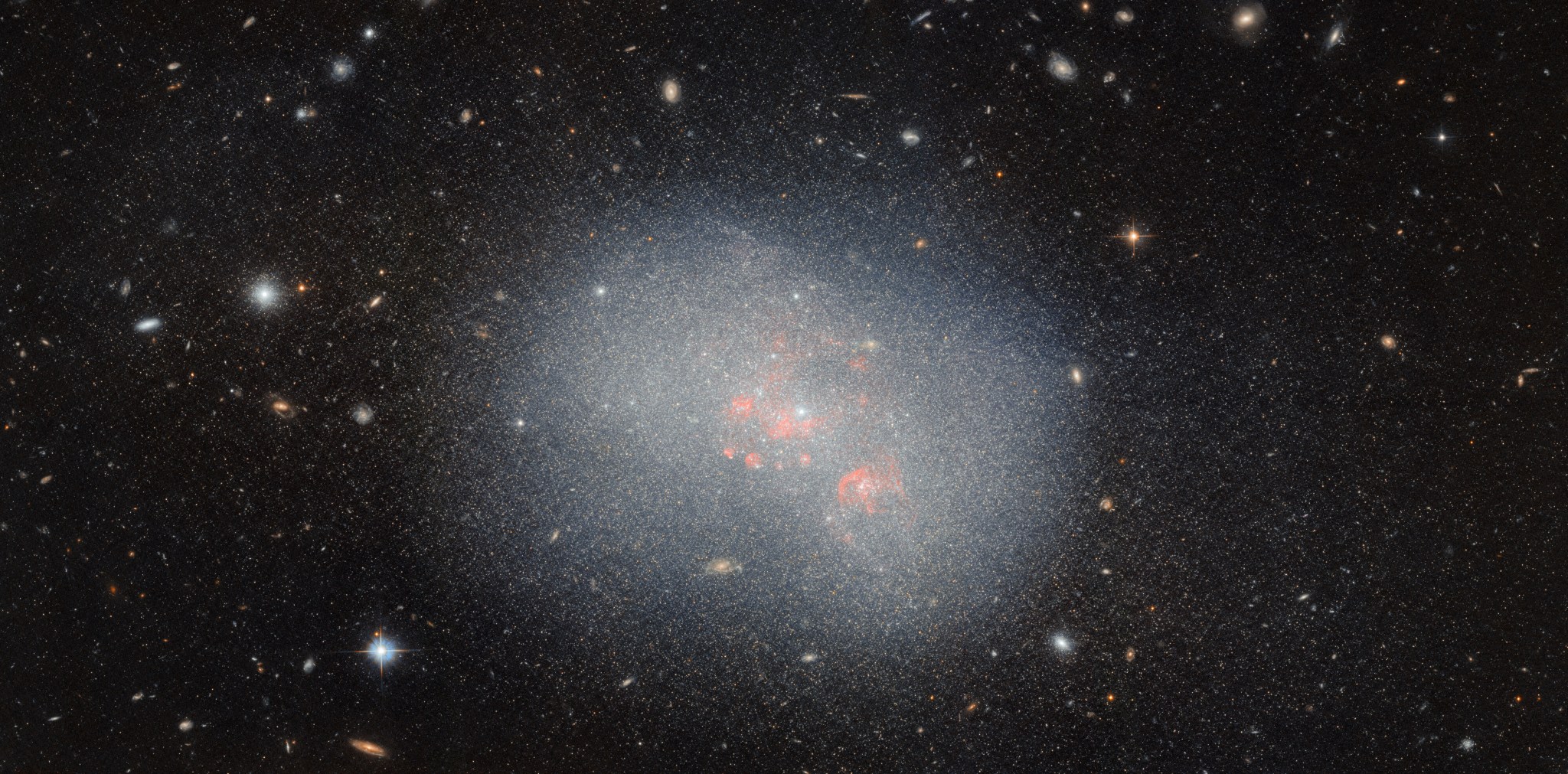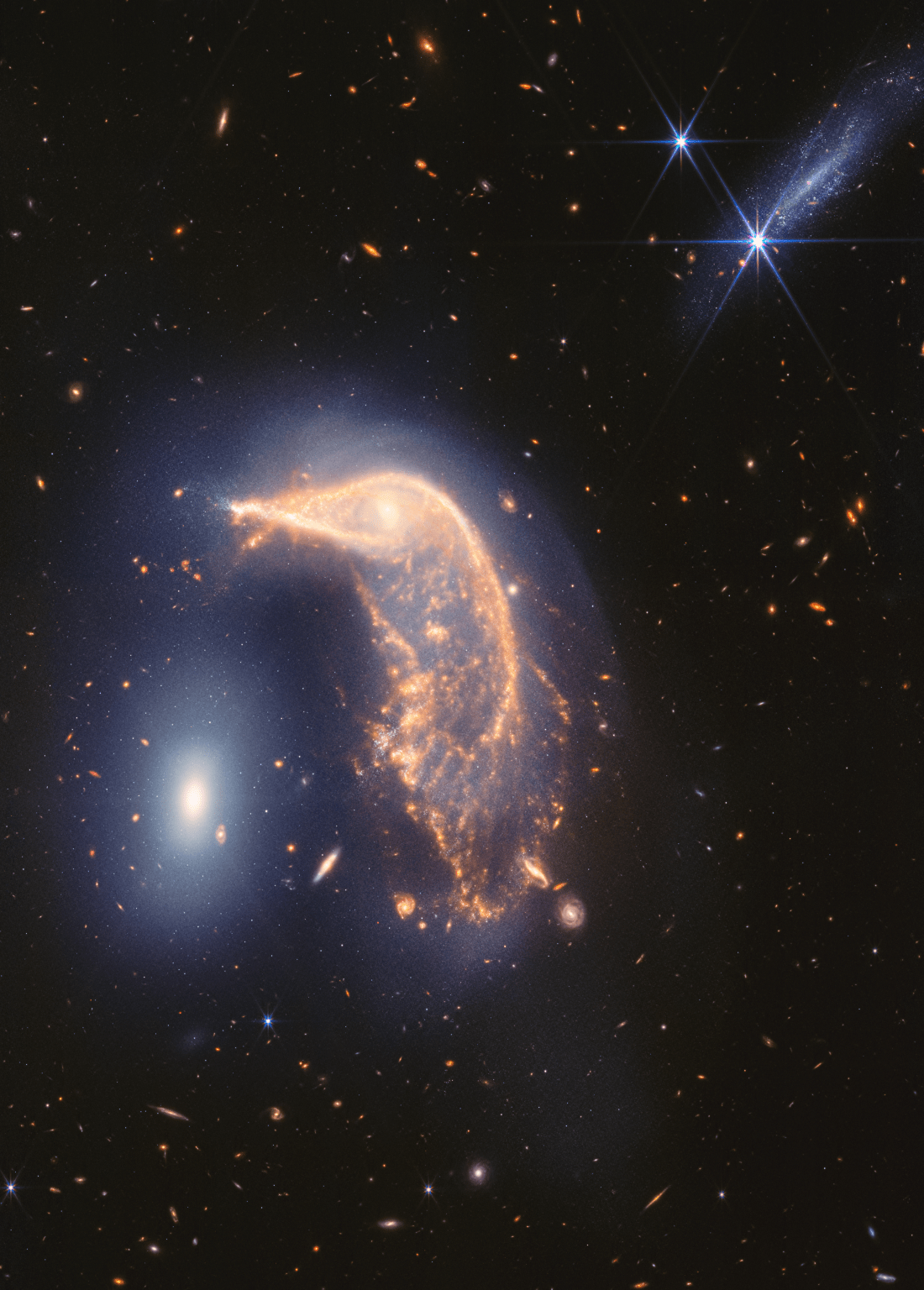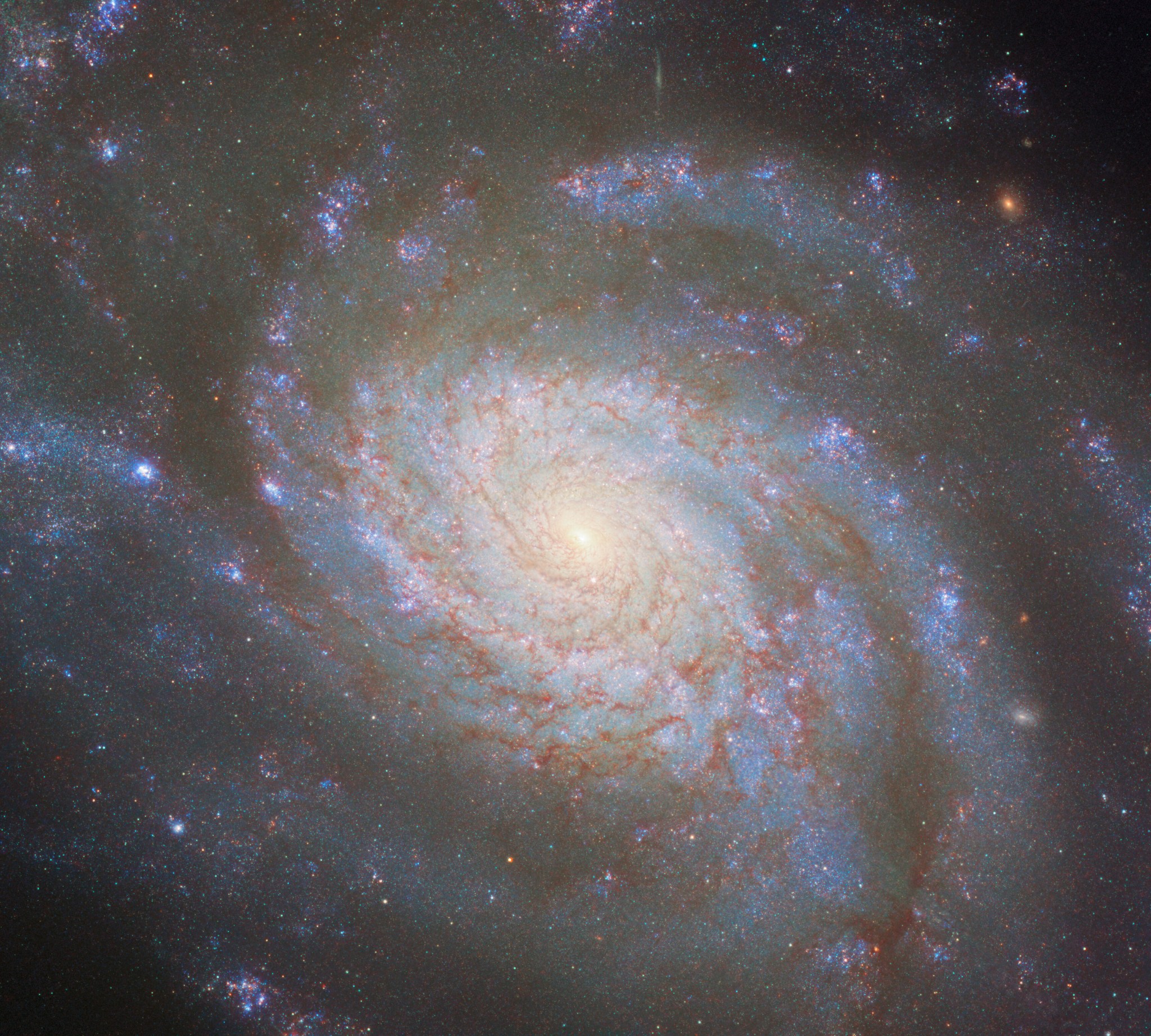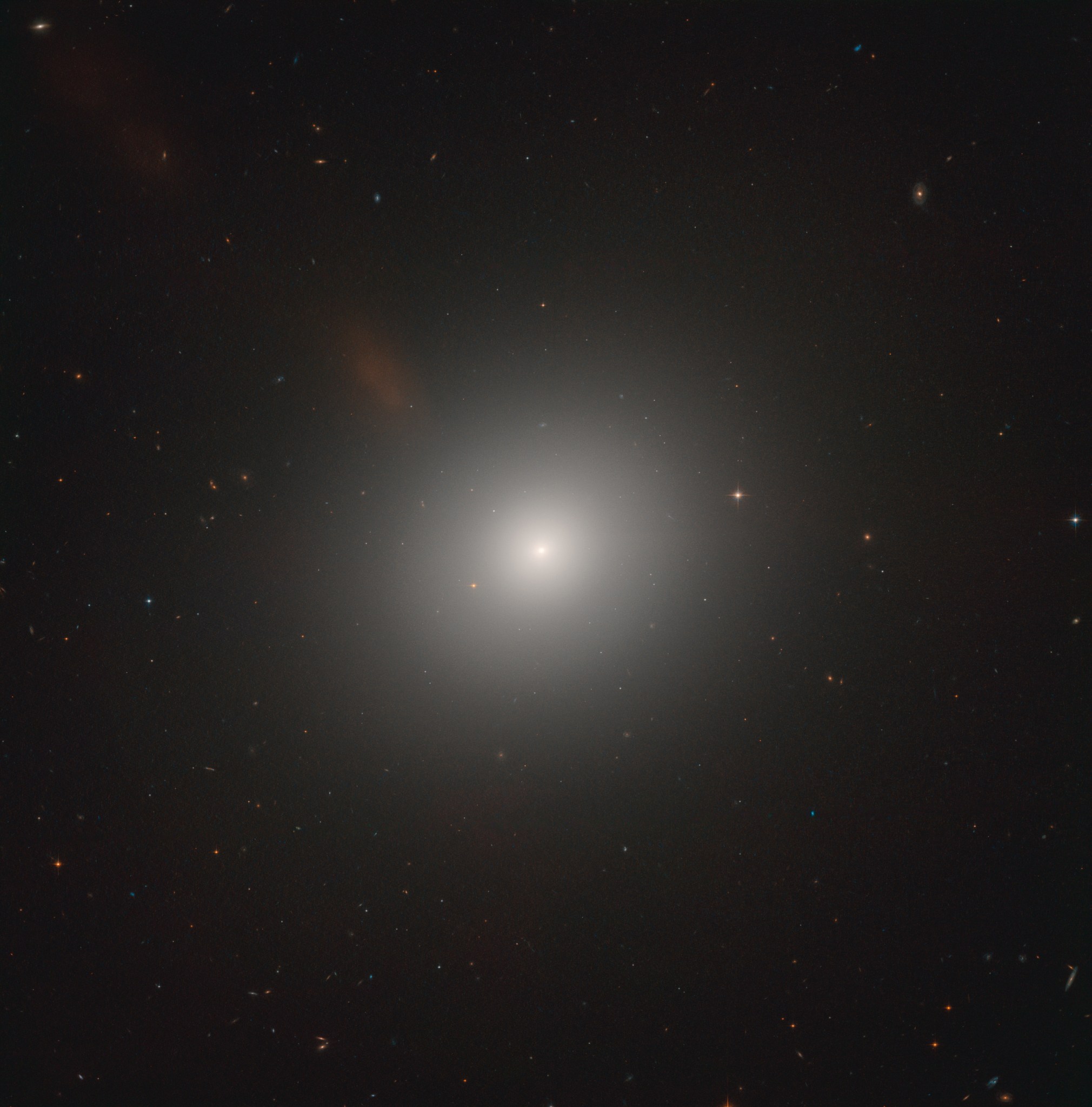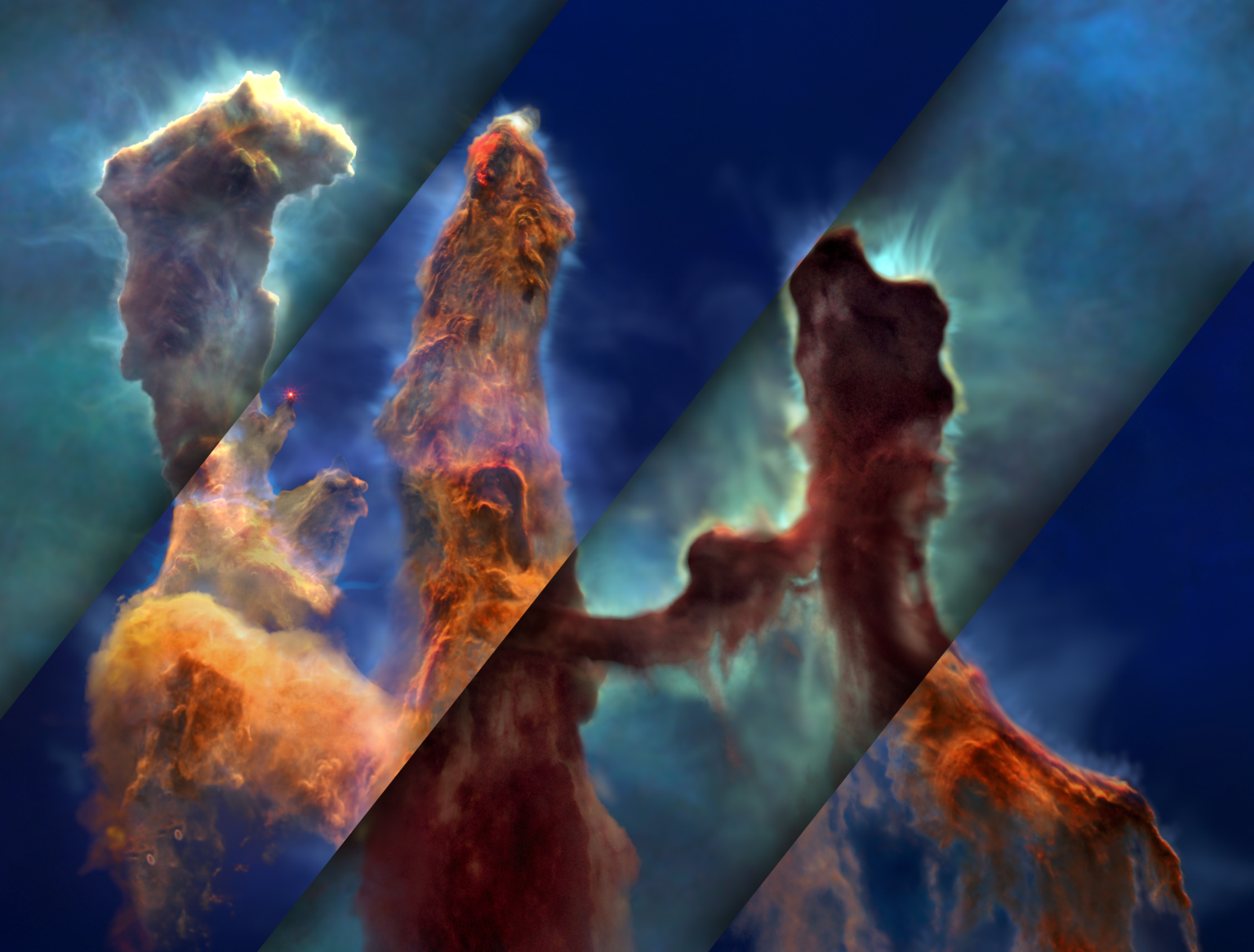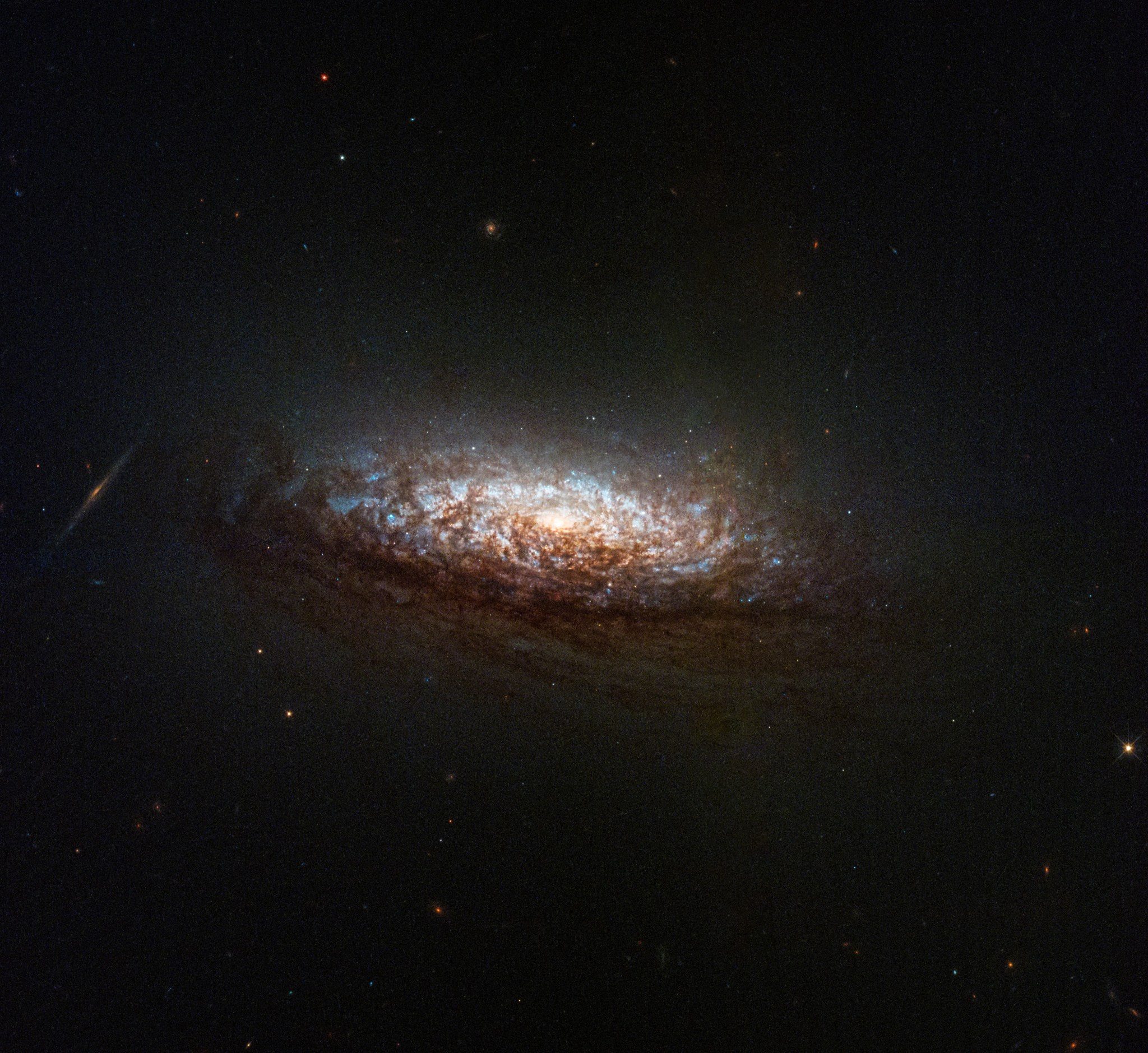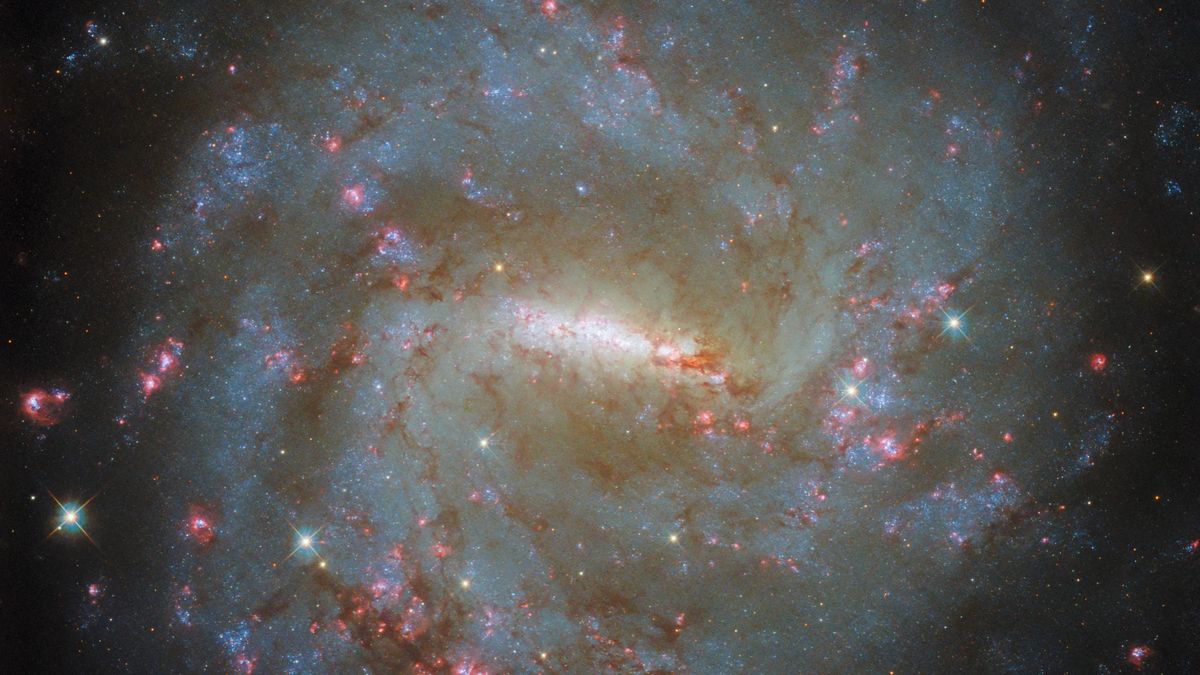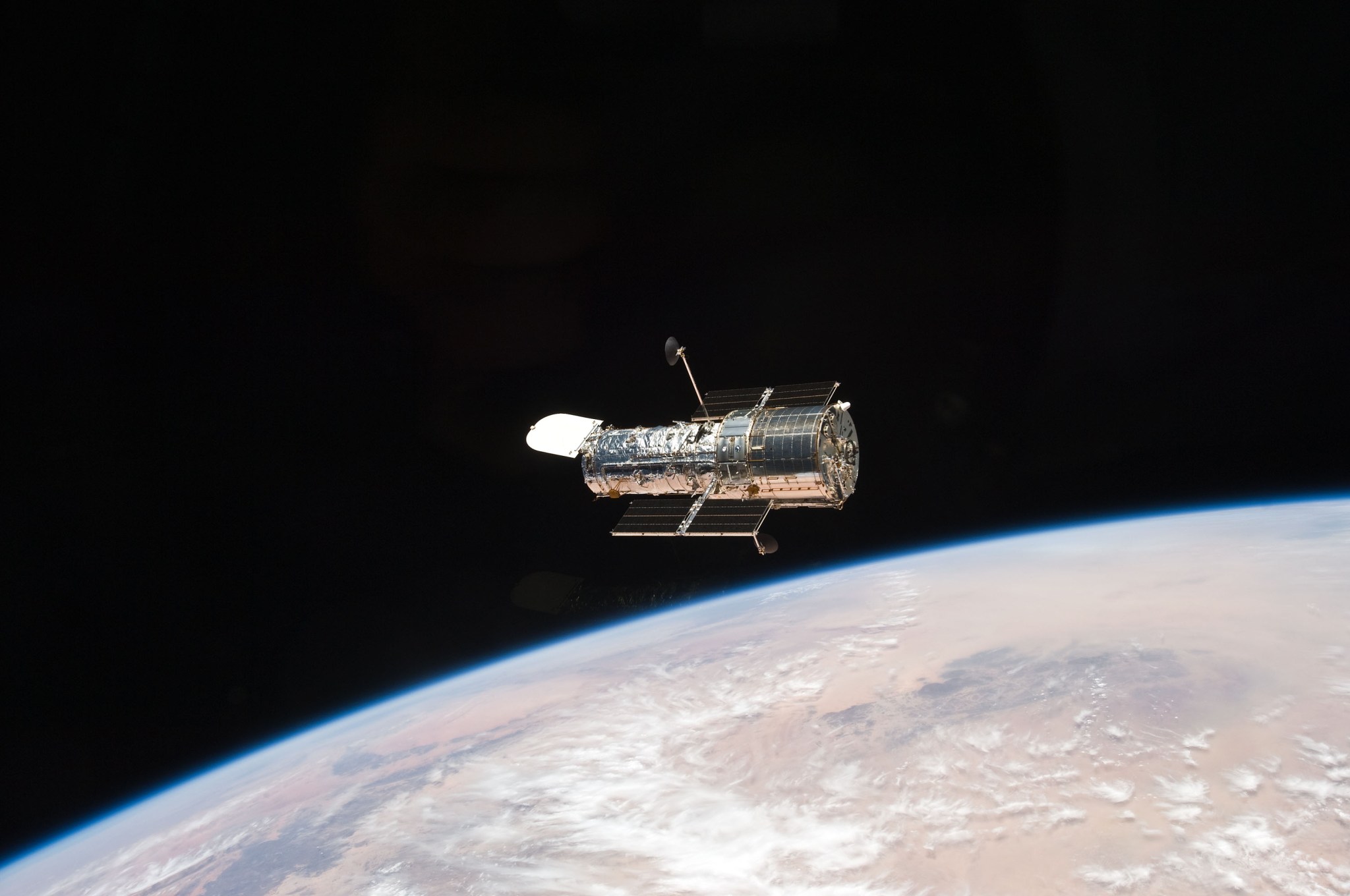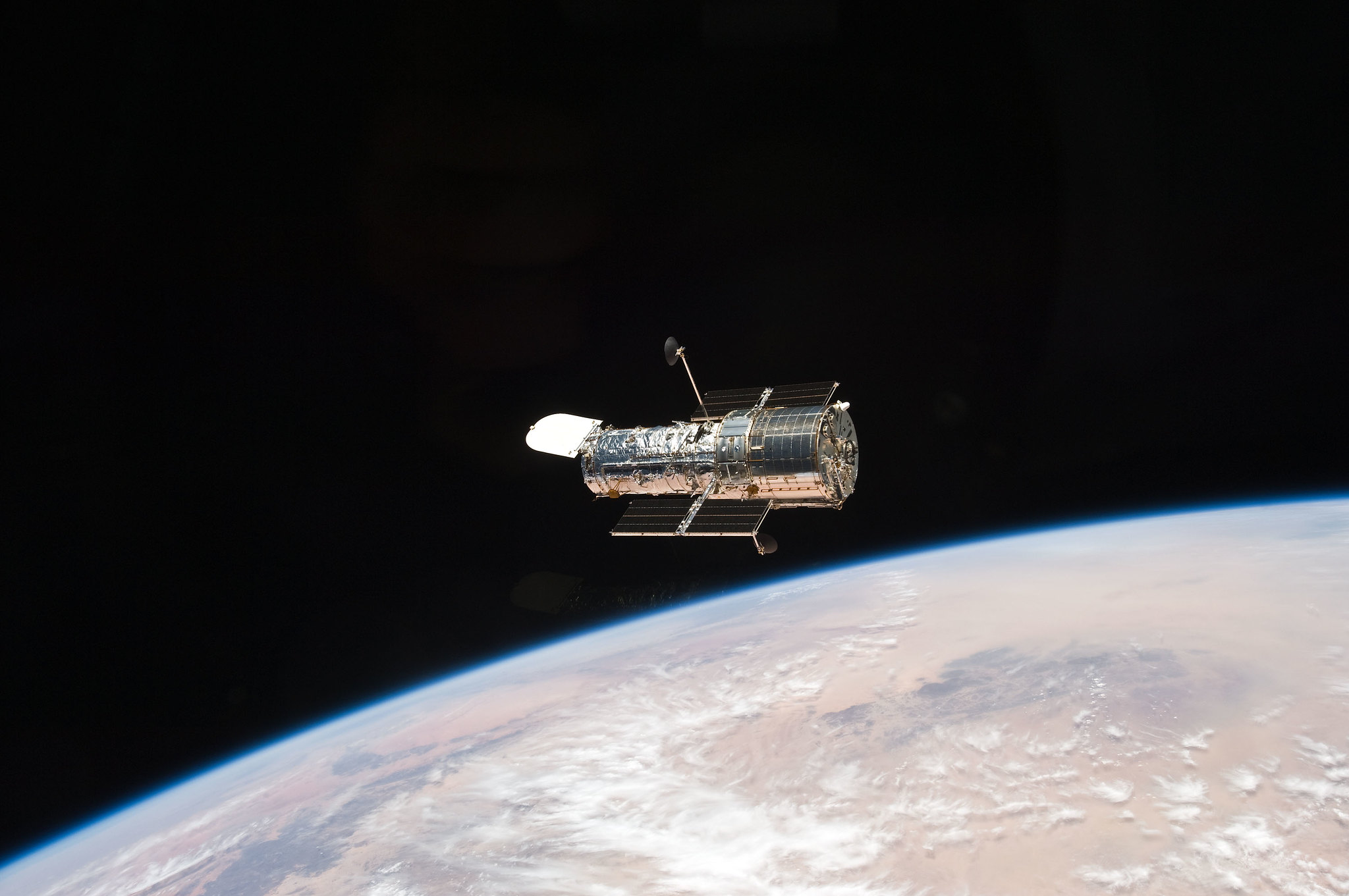NASA, ESA, A. Simon (Goddard Space Flight Center), M.H. Wong (University of California, Berkeley), and the OPAL Team NASA’s Hubble Space Telescope captured this image of Saturn and its colossal rings on July 4, 2020, during summer in the gas giant’s northern hemisphere. Two of Saturn’s icy moons are also clearly visible: Mimas at right, and Enceladus at bottom. The light reddish haze over the northern hemisphere seen in this color composite could be due to heating from increased sunlight, which could either change the atmospheric circulation or remove ices…
Read MoreTag: Hubble Space Telescope
Hubble Studies a Potential Galactic Merger
3 min read Hubble Studies a Potential Galactic Merger This NASA/ESA Hubble Space Telescope image captures the dwarf irregular galaxy NGC 5238. ESA/Hubble & NASA, F. Annibali This NASA/ESA Hubble Space Telescope image features the dwarf irregular galaxy NGC 5238, located 14.5 million light-years from Earth in the constellation Canes Venatici. Its unexciting, blob-like appearance seems to resemble an oversized star cluster more than a classic image of a galaxy. Its lackluster appearance belies its complicated structure, which is the subject of a great deal of research. As the image…
Read MoreVivid Portrait of Interacting Galaxies Marks Webb’s Second Anniversary
6 Min Read Vivid Portrait of Interacting Galaxies Marks Webb’s Second Anniversary Webb’s view of the interacting galaxies of Arp 142 that combines Webb’s NIRCam and MIRI instrument images. Full image below. Two for two! A duo of interacting galaxies commemorates the second science anniversary of NASA’s James Webb Space Telescope, which takes constant observations, including images and highly detailed data known as spectra. Its operations have led to a “parade” of discoveries by astronomers around the world. “Since President Biden and Vice President Harris unveiled the first image from…
Read MoreHubble Measures the Distance to a Supernova
3 min read Hubble Measures the Distance to a Supernova This NASA/ESA Hubble Space Telescope image features the galaxy NGC 3810. ESA/Hubble & NASA, D. Sand, R. J. Foley Measuring the distance to truly remote objects like galaxies, quasars, and galaxy clusters is a crucial task in astrophysics, particularly when it comes to studying the early universe, but it’s a difficult one to complete. We can only measure the distances to a few nearby objects like the Sun, planets, and some nearby stars directly. Beyond that, astronomers need to use…
Read MoreHubble Examines an Active Galaxy Near the Lion’s Heart
2 min read Hubble Examines an Active Galaxy Near the Lion’s Heart This NASA/ESA Hubble Space Telescope features the elliptical galaxy Messier 105. ESA/Hubble & NASA, C. Sarazin et al. It might appear featureless and unexciting at first glance, but NASA/ESA Hubble Space Telescope observations of this elliptical galaxy — known as Messier 105 — show that the stars near the galaxy’s center are moving very rapidly. Astronomers have concluded that these stars are zooming around a supermassive black hole with an estimated mass of 200 million Suns! This black…
Read MorePillars of Creation Star in New Visualization from NASA’s Hubble and Webb Telescopes
6 Min Read Pillars of Creation Star in New Visualization from NASA’s Hubble and Webb Telescopes A mosaic of visible-light (Hubble) and infrared-light (Webb) views from the same Pillars of Creation visualization frame. Credits: Greg Bacon, Ralf Crawford, Joseph DePasquale, Leah Hustak, Christian Nieves, Joseph Olmsted, Alyssa Pagan, and Frank Summers (STScI), NASA’s Universe of Learning Made famous in 1995 by NASA’s Hubble Space Telescope, the Pillars of Creation in the heart of the Eagle Nebula have captured imaginations worldwide with their arresting, ethereal beauty. Now, NASA has released a…
Read MoreNASA Releases Hubble Image Taken in New Pointing Mode
2 min read NASA Releases Hubble Image Taken in New Pointing Mode This NASA Hubble Space Telescope features the galaxy NGC 1546. NASA, ESA, STScI, David Thilker (JHU) NASA’s Hubble Space Telescope has taken its first new images since changing to an alternate operating mode that uses one gyro. The spacecraft returned to science operations June 14 after being offline for several weeks due to an issue with one of its gyroscopes (gyros), which help control and orient the telescope. This new image features NGC 1546, a nearby galaxy in…
Read MoreHubble Telescope shares stunning galactic view despite recent hardware malfunction (photo)
The aging but tenacious Hubble Space Telescope has beamed back yet another stunning photo of a distant galaxy. Hubble‘s latest view captures the barred spiral galaxy NGC 3059, which lies about 57 million light-years from Earth. The photo, released on June 7, was taken in May using the space telescope’s Wide Field Camera 3 instrument as part of a broader galactic study, according to a statement from NASA. The space telescope uses various filters for its observations, each of which allows specific wavelengths of light to pass through to the…
Read MoreNASA to Change How It Points Hubble Space Telescope
3 min read NASA to Change How It Points Hubble Space Telescope This image of NASA’s Hubble Space Telescope was taken on May 19, 2009 after deployment during Servicing Mission 4. NASA After completing a series of tests and carefully considering the options, NASA announced Tuesday work is underway to transition its Hubble Space Telescope to operate using only one gyroscope (gyro). While the telescope went into safe mode May 24, where it now remains until work is complete, this change will enable Hubble to continue exploring the secrets of…
Read MoreNASA Invites Media to Discuss Hubble Operations Update
An STS-125 crew member aboard the Space Shuttle Atlantis captured this image of NASA’s Hubble Space Telescope on May 19, 2009. Credit: NASA NASA will hold a media teleconference at 4 p.m. EDT, Tuesday, June 4, to provide an update on operations for NASA’s Hubble Space Telescope. NASA anticipates Hubble will continue making discoveries, working with other observatories such as the agency’s James Webb Space Telescope, throughout this decade and into the next. Audio of the teleconference will stream live on the agency’s website at: https://www.nasa.gov/nasatv/ Participants in the teleconference include:…
Read More
